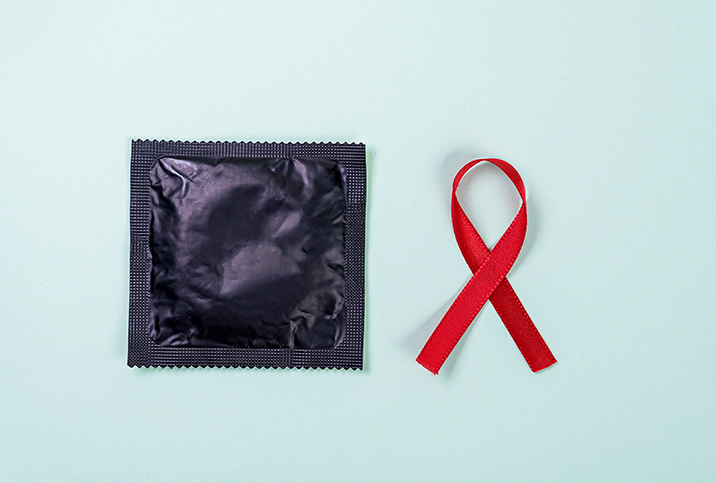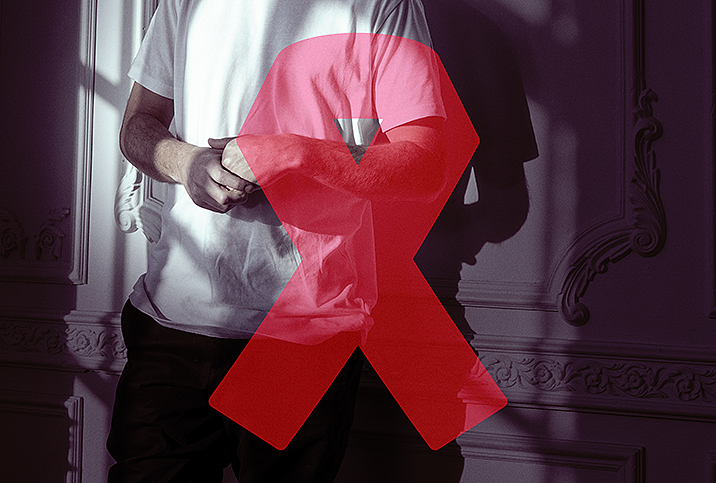How to Fight HIV Before and After Transmission

HIV, or the human immunodeficiency virus, is contracted through the exchange of bodily fluid with an infected person. The most common ways HIV is transmitted involve unprotected sex or sharing syringe needles, but it also spreads by blood contact with an infected person as well as potentially from HIV-positive pregnant women to their babies. While there is no cure, advancing treatment methods can help infected people manage HIV and its symptoms.
What is HIV?
A virus that attacks the immune system, HIV destroys cells that fight infections and diseases. HIV puts you at risk of contracting other sexually transmitted infections (STIs), acquired immunodeficiency syndrome (AIDS), chronic diseases, infections and other health problems. If you're at risk of HIV exposure, get tested and, if necessary, treated.
Note that HIV and AIDS are not interchangeable terms. AIDS is a late stage of the HIV infection, characterized by large-scale damage to the immune system. With treatment, however, most individuals with HIV will not develop AIDS.
Recognizing HIV
HIV will present different symptoms throughout different stages. The earlier you seek treatment, the less likely the disease will advance.
Acute HIV
You might develop flu-like symptoms within two to four weeks after HIV exposure. This phase can last a few weeks, during which time you may have a fever, headaches, muscle aches, joint pain or a rash. You may also experience mouth sores, a sore throat, swollen lymph glands, night sweats, a cough, diarrhea or weight loss.
HIV spreads easily during its acute phase, when the amount of virus in your blood is very high.
Chronic HIV
Chronic HIV, or clinical latent infection, is the stage of HIV that often doesn't produce any symptoms. However, the virus can still be spread during this stage, which might last several years.
Symptomatic HIV
As HIV multiplies in your body, it destroys immune cells that fight off germs. Over time, you can develop or experience fatigue, fever, diarrhea, swollen lymph nodes, weight loss, shingles, pneumonia or oral yeast infections (thrush).
AIDS
Untreated HIV can develop into AIDS after an estimated eight to 10 years. AIDS is a condition in which your immune system experiences extreme damage, increasing your risk of developing severe infections and cancers. It is characterized by the proportion of CD4 cells (a type of white blood cell) in your body dropping to less than 200 cells per cubic millimeter of blood. You may also experience chills, sweats, recurring fever, chronic diarrhea, lesions or white spots in your mouth, as well as weakness and fatigue.
Medical diagnosis
Your healthcare provider can test you for HIV by using a sample of your saliva or blood. If you have HIV, blood tests also help your doctor determine the stage of HIV and whether it has progressed to AIDS. They may recommend additional diagnostic testing to check for infections or other HIV-related complications.
HIV treatment options
While there's no cure for HIV or AIDS, treatment can help you better manage the condition and reduce your risk of complications. Antiretroviral therapy (ART), a combination of HIV medicines, can keep virus levels in your body as low as possible. Your doctor may also suggest you take combinations of three or more medications to achieve the most effective results. To check that your treatment is working, regular bloodwork will become part of your routine.
Reduce your risk
There are several ways you can lower the risk of contracting HIV or spreading it to other people. If you're undergoing treatment and viral levels in your blood stay very low, you'll greatly reduce the chance of transmitting the virus to other people. It is important to disclose your HIV status to all sexual partners.
Pre-exposure prophylaxis (PrEP) will reduce your chance of getting HIV if you're in a high-risk category. Using protection such as condoms correctly during sexual intercourse is another important factor. Sex with one mutually monogamous partner can also reduce your risk of HIV and other STIs. If you've been exposed to HIV, take post-exposure prophylaxis (PEP) within 72 hours to lower your risk of contracting the virus.
The treatment options for individuals with HIV continue to advance, but there's still no cure. Be sure to take precautions to reduce the chance of contracting HIV or any other STI, and get tested periodically.


















